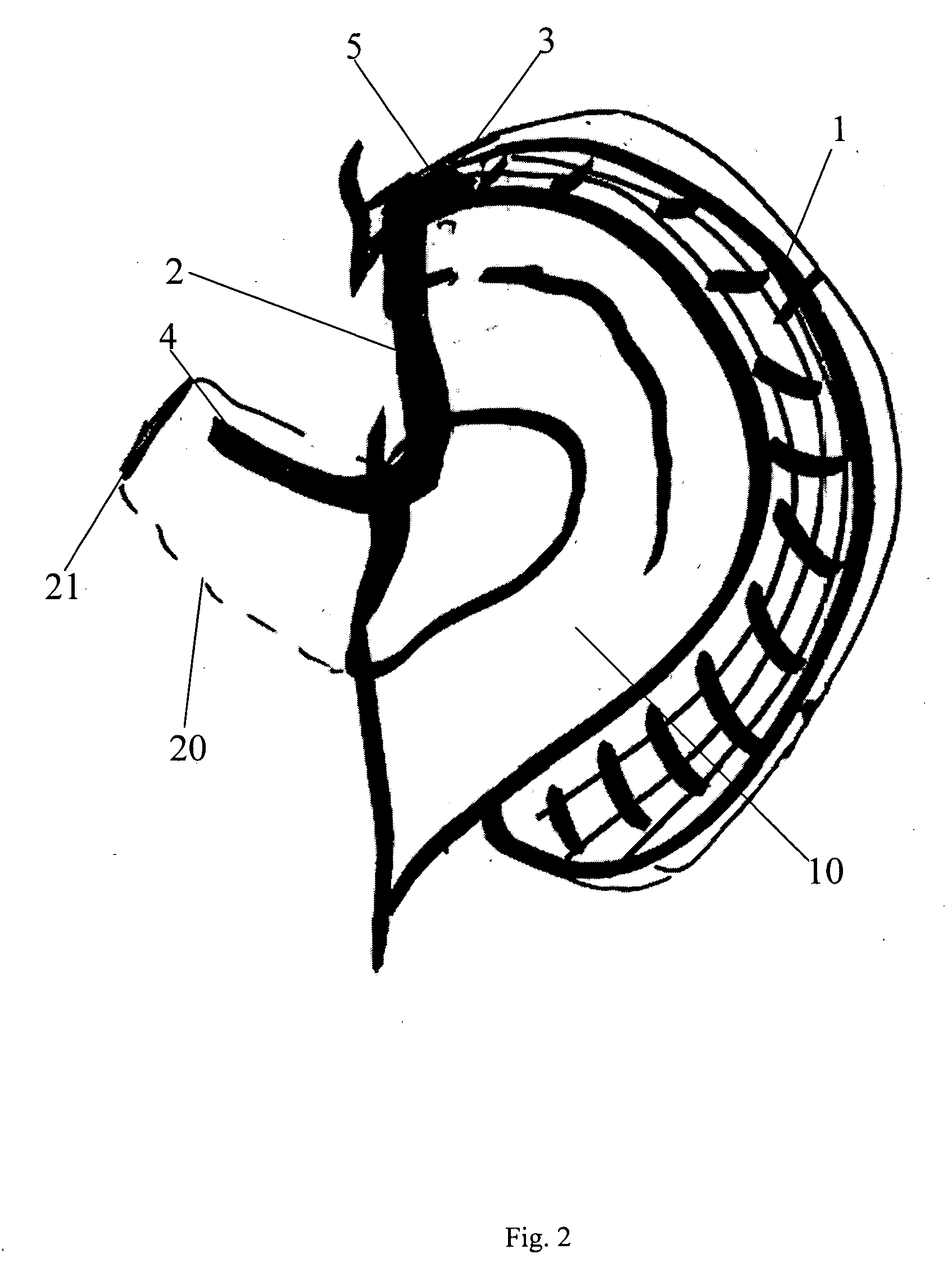Method for obtaining real ear measurements using a hearing aid
- Summary
- Abstract
- Description
- Claims
- Application Information
AI Technical Summary
Benefits of technology
Problems solved by technology
Method used
Image
Examples
Embodiment Construction
[0016] In a first aspect of the invention Real Ear Unaided Gain or REUG data is obtained using the hearing aid as the measuring instrument. To measure REUG, a sequential measurement in free field of an identical noise signal is required. As explained, prior art measurements are performed with dedicated microphones which at the same time samples sound from inside the ear, usually by use of a small tube placed inside the ear, and from a reference point outside the ear.
[0017] As shown in FIG. 1 and 2 a sequential measurement is used according to the invention. The reference measurement outside the ear is illustrated in FIG. 1. Here a BTE (behind the ear hearing aid) 1 is placed at the ear 10. A tube 2 is connected at a first end 5 to the microphone inlet 3 of the BTE 1 and the other end 4 of the tube 2 is placed at the reference position. This reference position is right at the microphone inlet 3 of the BTE 1. The hearing aid 1 will be connected to a PC or other fitting device (not sh...
PUM
 Login to View More
Login to View More Abstract
Description
Claims
Application Information
 Login to View More
Login to View More - R&D
- Intellectual Property
- Life Sciences
- Materials
- Tech Scout
- Unparalleled Data Quality
- Higher Quality Content
- 60% Fewer Hallucinations
Browse by: Latest US Patents, China's latest patents, Technical Efficacy Thesaurus, Application Domain, Technology Topic, Popular Technical Reports.
© 2025 PatSnap. All rights reserved.Legal|Privacy policy|Modern Slavery Act Transparency Statement|Sitemap|About US| Contact US: help@patsnap.com



